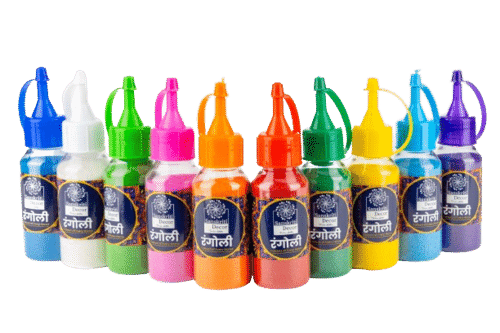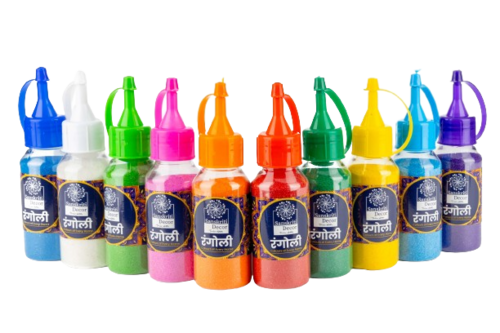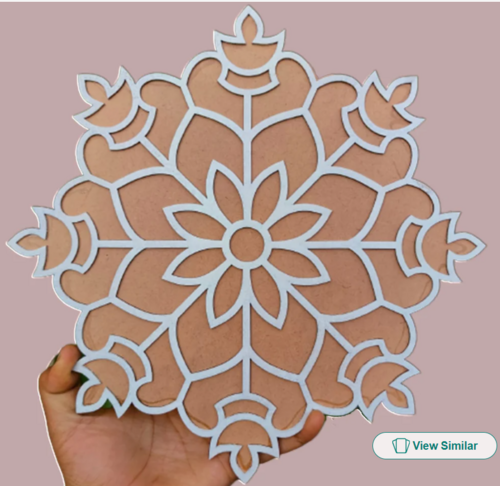Gopal Rangoli Colours
Product Details:
Gopal Rangoli Colours Price And Quantity
- 15 INR/Piece
- 100 Piece
Gopal Rangoli Colours Trade Information
- 5000 Piece Per Month
- 10 Days
Product Description
Rangoli colors are integral to this traditional Indian art form, known for their vivid and expressive qualities. These colors, often used in festivals and special occasions, are chosen for their beauty and symbolic meanings. Here™s a description of the types and characteristics of rangoli colors:
1. Red A bold, vibrant hue that symbolizes prosperity, energy, and celebration. Traditionally derived from vermilion or beetroot powder, red adds a lively and dynamic element to rangoli designs.
2. Yellow Bright and cheerful, yellow represents warmth, happiness, and auspiciousness. It is commonly made from turmeric or saffron, lending a golden glow to the patterns.
3. Green This color, which symbolizes growth, harmony, and fertility, is often created from natural sources like neem leaves or artificial dyes. It adds a fresh, rejuvenating touch to rangoli designs.
4. Blue Representing tranquility and divinity, blue hues are usually obtained from indigo or synthetic pigments. It brings a calming and serene element to the rangoli.
5. White Pure and simple, white signifies purity and peace. It is often made from rice flour or powdered chalk, and is used to create intricate details and contrast in rangoli designs.
6. Black Bold and striking, black is used to outline or accentuate patterns. It is made from charcoal or black dye and adds depth and definition to the design.
7. Pink A softer, vibrant color that symbolizes love and joy. It is used to add a playful and delicate touch to the rangoli.
8. Orange With its warm and inviting tone, orange represents enthusiasm and creativity. It is derived from natural sources like saffron or synthetic colors.
9. Purple Often associated with luxury and spirituality, purple adds a rich and regal touch to rangoli designs. It is made from artificial dyes or a mix of red and blue powders.
10. Gold and Silver Metallic colors like gold and silver are used to add a touch of glamour and festivity. These are usually available in glitter or foil forms and are used sparingly to highlight parts of the rangoli.
Rangoli colors can be applied using powders, colored sand, flower petals, or even paints. The choice of colors and their arrangement not only enhances the visual appeal but also imbues the rangoli with cultural significance and symbolic meaning.

Price:
- 50
- 100
- 200
- 250
- 500
- 1000+
Other Products in 'Rangoli Colour' category
 |
LAXMI NARAIN JAI GOPAL
All Rights Reserved.(Terms of Use) Developed and Managed by Infocom Network Private Limited. |






 Send Inquiry
Send Inquiry Send SMS
Send SMS